
Fundamentals
The concept of Textured Hair Wisdom represents a profound understanding, an ancestral knowing that extends beyond mere aesthetics or modern scientific explanation. At its core, this wisdom is a deep, inherited comprehension of textured hair’s unique biological attributes, its historical journey, and its intrinsic connection to identity and communal wellbeing. It is not a fleeting trend, but a foundational declaration of how hair, particularly the rich diversity of coils, curls, and waves, has always held a central place in human experience, especially within Black and mixed-race communities. This understanding involves recognizing the hair strand not simply as a physical filament, but as a living archive, carrying the echoes of generations.
This initial delineation of Textured Hair Wisdom clarifies its foundational elements for those newly encountering this perspective. It highlights the interwoven nature of hair’s physical characteristics with its spiritual and cultural significance. For countless centuries, before the advent of industrial beauty systems, communities possessed an intuitive grasp of how to care for, adorn, and interpret textured hair.
This traditional knowledge, passed down through oral traditions and communal practices, formed a living library of care. It was a holistic approach, where hair health was inseparable from the health of the individual and the collective.
Textured Hair Wisdom embodies the ancestral understanding of coiled, curled, and wavy hair as a living archive of heritage and identity.
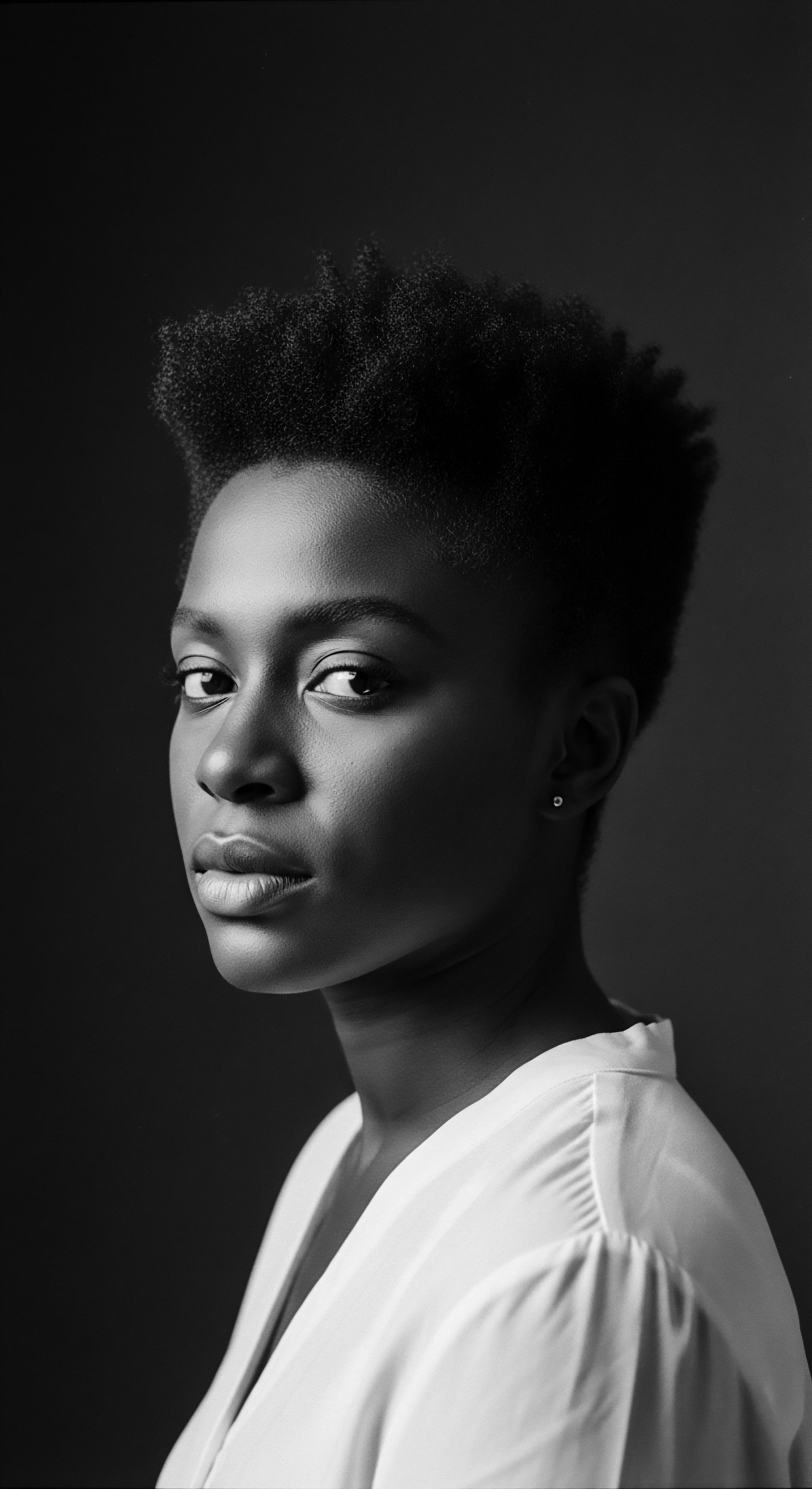
The Strand as a Living Chronicle
Each individual strand of textured hair, with its distinctive helical structure, tells a story. This story begins at the cellular level, where the unique elliptical shape of the follicle dictates the curl pattern, creating a hair shaft that often resists moisture and is prone to dryness, yet possesses incredible tensile strength when properly cared for. The fundamental specification of textured hair involves understanding these inherent biological traits. Early generations, through observation and empirical practice, learned to work with these qualities, not against them.
They developed specific regimens, utilizing indigenous botanicals and techniques that respected the hair’s natural inclinations. This foundational understanding laid the groundwork for sophisticated systems of care that sustained hair health across diverse climates and conditions.
Consider the daily rituals that characterized hair care in many ancestral African societies. These were not simply routines; they were ceremonies of connection, opportunities for intergenerational teaching and communal bonding. The hands that braided, twisted, or oiled hair were transmitting knowledge, history, and affection.
This initial grasp of Textured Hair Wisdom, therefore, is rooted in the practical application of care, a tactile connection that acknowledged the hair’s elemental biology while honoring its deeper cultural significance. It was a pragmatic art, honed over millennia, ensuring hair remained vibrant and communicative.
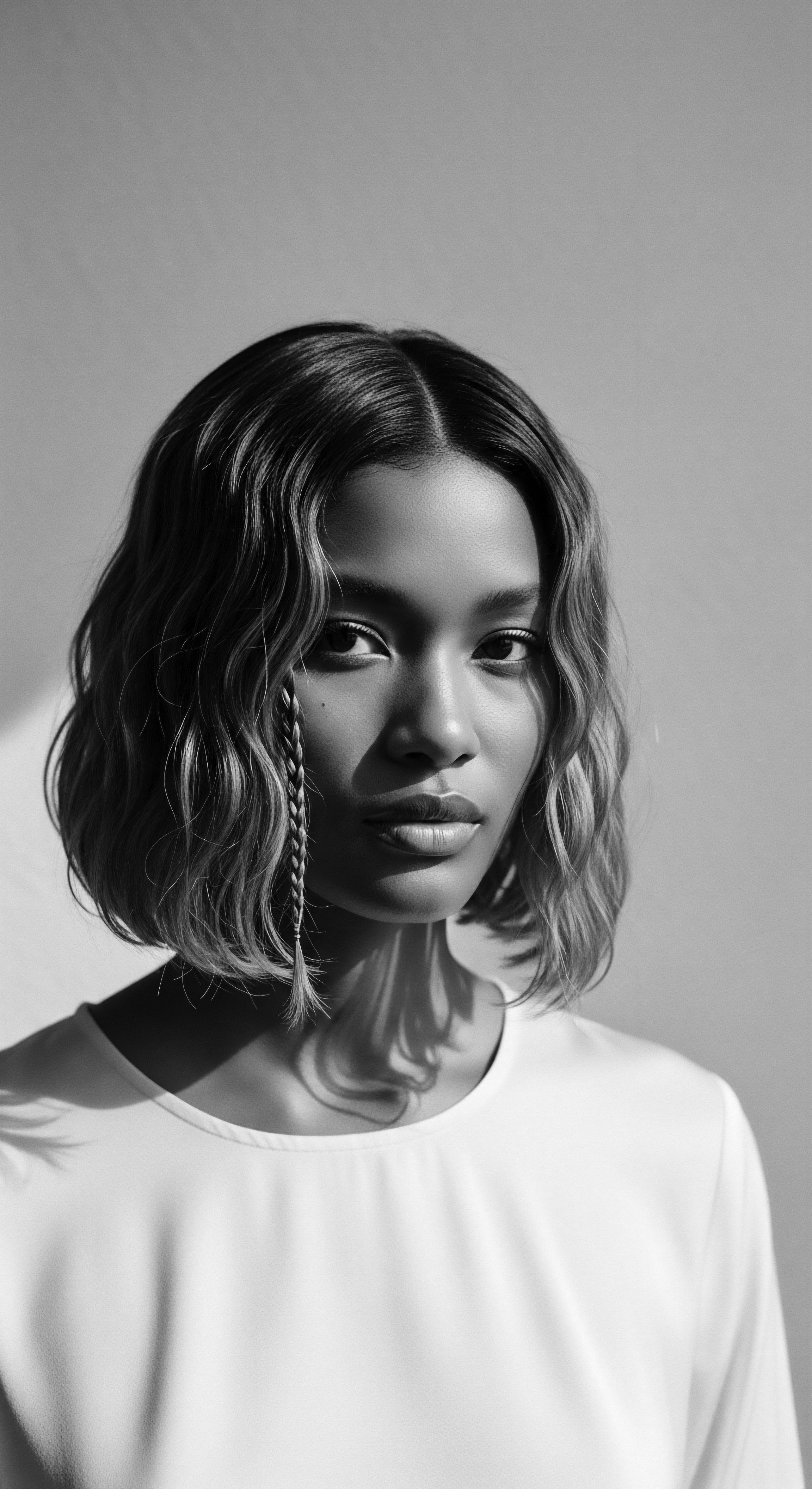
Early Recognitions of Hair’s Nature
- Hydration ❉ Ancient practices often involved regular application of natural oils and butters, such as shea butter or palm oil, to seal moisture within the hair shaft, countering its natural tendency toward dryness.
- Protection ❉ Styles like intricate braids and cornrows served not only as markers of identity but also as protective shields, safeguarding the hair from environmental elements and reducing breakage.
- Scalp Health ❉ Herbal infusions and clay mixtures were used to cleanse and soothe the scalp, fostering a healthy foundation for hair growth.
The delineation of Textured Hair Wisdom in its fundamental sense provides a starting point for appreciating its comprehensive scope. It moves beyond a superficial description of hair type, inviting a deeper exploration of the relationship between human beings and their hair, a relationship shaped by history, geography, and an abiding respect for nature’s design. This basic interpretation establishes that understanding textured hair requires acknowledging its unique physical characteristics and the ancestral methods developed to sustain its vitality.

Intermediate
Expanding upon the fundamental understanding, the intermediate interpretation of Textured Hair Wisdom delves into its broader implications, particularly its profound cultural meaning and the historical circumstances that have shaped its perception. This is where the concept moves from a simple explanation of care to a richer exploration of hair as a carrier of heritage, a symbol of resilience, and a medium for communication across the Black and mixed-race diaspora. It involves recognizing the intricate ways in which hair has been a site of both celebration and contention, reflecting societal shifts and personal declarations of identity. The significance of Textured Hair Wisdom at this level lies in its capacity to connect individuals to a vast, shared ancestral legacy.
The historical journey of textured hair is marked by periods of profound reverence and moments of systematic devaluation. In pre-colonial African societies, hair was never merely ornamental. It was a complex system of communication, a visual language conveying age, marital status, social standing, tribal affiliation, and even spiritual beliefs. The very appearance of a person’s hair could reveal their community role or recent life events.
This inherent import was stripped away during the transatlantic slave trade, when enslaved Africans often had their heads shaved upon arrival, a brutal act designed to erase identity and sever connections to their ancestral lands. This act of dehumanization sought to dismantle the very foundation of Textured Hair Wisdom, forcing a re-evaluation of its meaning within a new, oppressive context.
Textured Hair Wisdom serves as a testament to cultural endurance, a vibrant thread connecting ancestral practices to contemporary identity.

Hair as a Medium of Ancestral Communication
Even amidst the horrors of enslavement, the wisdom persisted, albeit in clandestine forms. Enslaved African women, particularly rice farmers, are documented to have braided rice seeds into their hair before forced migration to the Americas, a poignant act of preserving sustenance and cultural memory. This specific historical example underscores hair’s profound connection to survival and heritage.
This practice was not simply about sustenance; it was an act of profound cultural resistance, a silent defiance against the erasure of their very being. The hair became a repository of hope, a vessel for the continuation of life and tradition in new, hostile environments.
The Tignon Laws, enacted in Louisiana in 1786, represent another stark historical instance of attempts to control Black women’s hair and, by extension, their social standing. These laws mandated that free Black women, whose elaborate hairstyles often drew attention and admiration, cover their hair with a tignon or headscarf. This legal imposition aimed to visually mark them as inferior to white women, yet, in a remarkable display of resilience, many women transformed these headscarves into ornate, colorful expressions of their autonomy and style.
This act of reappropriation, transforming a tool of oppression into a symbol of defiance, illustrates the enduring power of Textured Hair Wisdom as a source of creative adaptation and cultural preservation. The deeper meaning of this wisdom thus includes the ability to find beauty and agency even within constrained circumstances.

Evolution of Hair Practices Through Adversity
The trajectory of textured hair care and styling within the diaspora reveals a continuous adaptation of ancestral wisdom. The absence of traditional tools and ingredients in the Americas compelled enslaved individuals to innovate, utilizing readily available materials like butter, kerosene, or even bacon grease for conditioning, and livestock combs for detangling. This resourcefulness, born of necessity, further highlights the adaptive nature of Textured Hair Wisdom, demonstrating an unwavering commitment to hair care despite immense challenges.
The understanding of Textured Hair Wisdom at this intermediate level therefore recognizes that hair is not a static entity but a dynamic aspect of identity, constantly shaped by historical forces and cultural ingenuity. It acknowledges the painful legacies of hair discrimination while celebrating the profound ways in which Black and mixed-race communities have reclaimed and redefined the meaning of their hair.
| Historical Period/Context Pre-Colonial African Societies |
| Meaning and Purpose of Textured Hair Signifier of social status, age, tribal identity, spiritual connection, and communication. |
| Historical Period/Context Transatlantic Slave Trade |
| Meaning and Purpose of Textured Hair Site of forced dehumanization (shaving), but also covert resistance (e.g. rice seeds braided into hair). |
| Historical Period/Context Post-Slavery & Jim Crow Era |
| Meaning and Purpose of Textured Hair Pressure to conform to Eurocentric beauty standards; emergence of straightening tools and products for social and economic assimilation. |
| Historical Period/Context Civil Rights & Black Power Movements |
| Meaning and Purpose of Textured Hair Reclamation of natural hair (Afro) as a symbol of pride, political resistance, and cultural affirmation. |
| Historical Period/Context This table underscores the enduring capacity of textured hair to reflect and shape the lived experiences of Black and mixed-race communities across history. |
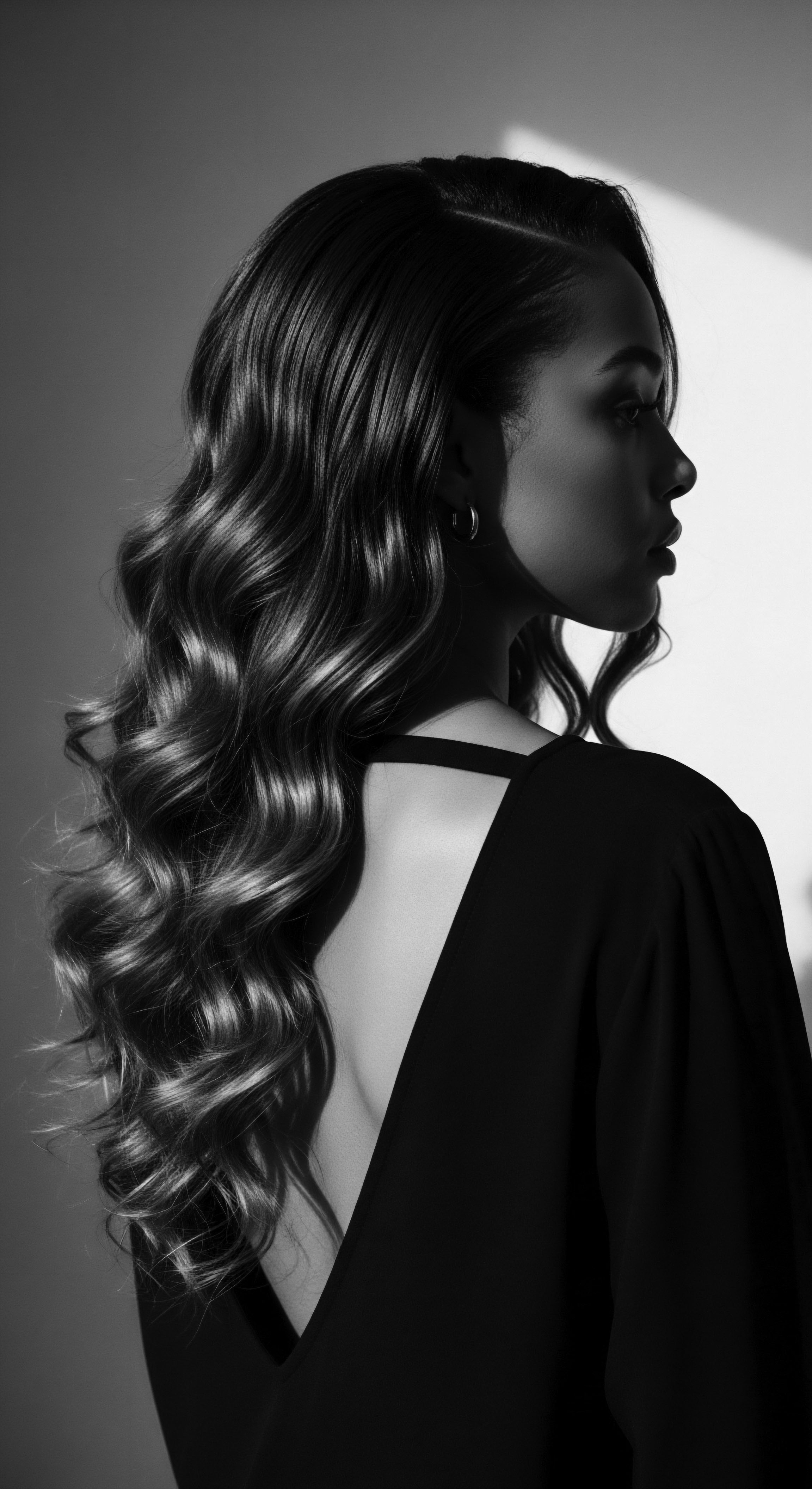
Academic
The academic delineation of Textured Hair Wisdom posits it as a complex, interdisciplinary framework for understanding the biological, socio-cultural, and psychological dimensions of coiled, curled, and wavy hair, particularly within diasporic communities of African descent. This scholarly interpretation transcends anecdotal observation, grounding its explication in rigorous research from fields such as ethnobotany, anthropology, sociology, and critical race theory. It examines the historical evolution of hair practices, the construction of beauty standards, and the profound implications for collective and individual identity, offering a comprehensive and authoritative statement on its significance. The essence of Textured Hair Wisdom, viewed academically, lies in its capacity to reveal deep truths about human adaptation, cultural resilience, and the persistent quest for self-determination.
From a biological perspective, textured hair exhibits unique structural properties, including an elliptical cross-section and a distinct pattern of disulfide bonds, which contribute to its characteristic curl and often result in a higher propensity for dryness and breakage compared to straighter hair types. These inherent qualities necessitated the development of specialized care practices across generations. Ethnobotanical studies, for instance, provide compelling evidence of sophisticated ancestral knowledge regarding natural ingredients. In Chad, the enduring Chebe ritual, involving the application of a paste made from roasted and crushed Chebe seeds (Croton gratissimus) along with cherry seeds and cloves, has been practiced for centuries to promote hair length and luster.
This practice, passed down through matriarchal lines, exemplifies an applied ethnobotanical wisdom, demonstrating a deep understanding of local flora’s properties and their synergistic application for hair health. The Chebe ritual, still practiced today, represents a living continuum of ancestral care, showcasing how traditional ecological knowledge informs effective hair management.
Academic inquiry into Textured Hair Wisdom reveals a sophisticated interplay of biology, culture, and historical adaptation, solidifying its place as a legitimate field of study.
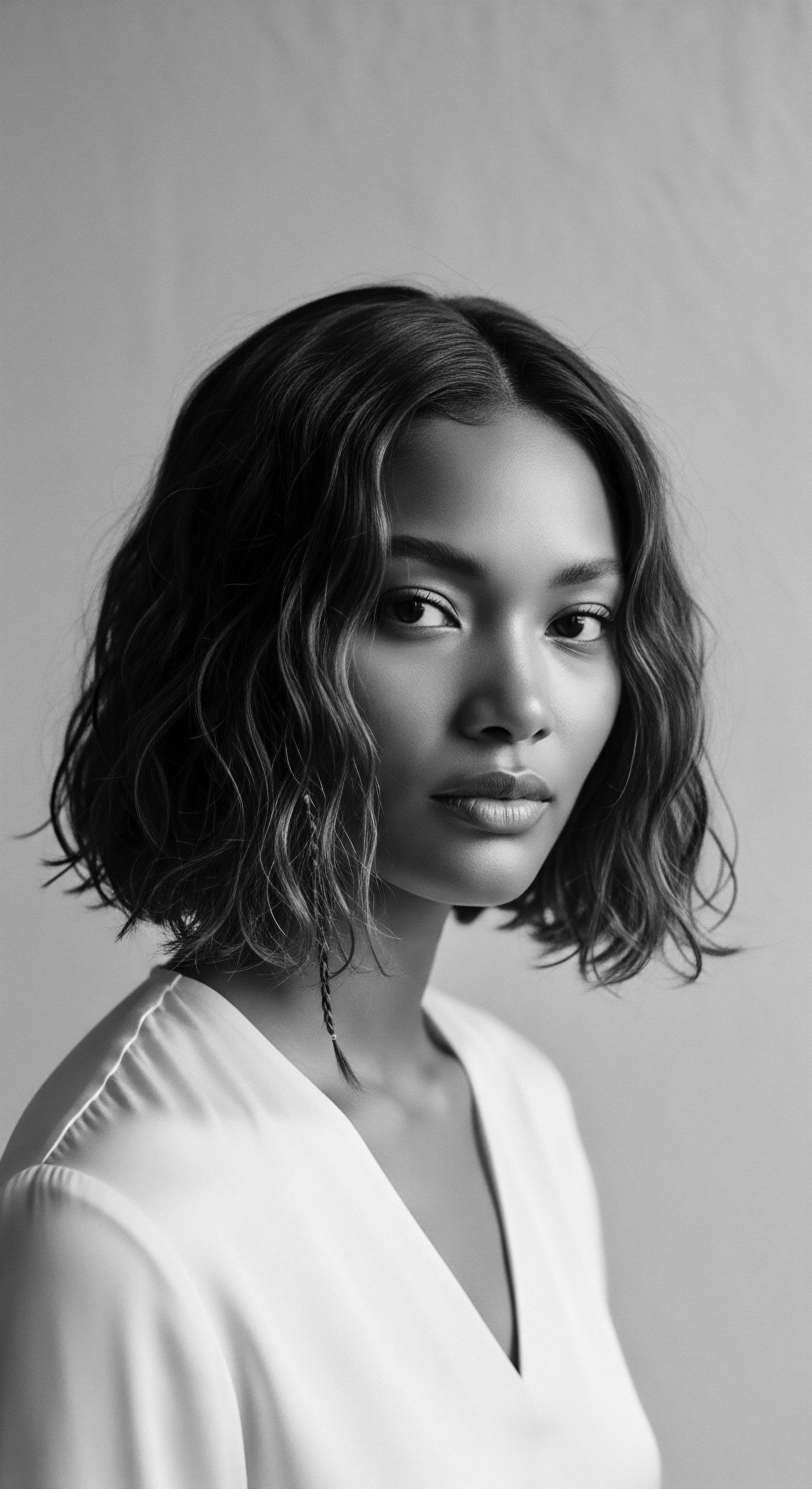
Anthropological and Sociological Interpretations
Anthropological investigations illuminate how hair served as a potent semiotic system in pre-colonial African societies. Hairstyles were not merely decorative; they functioned as intricate social maps, signifying a person’s age, marital status, tribal allegiance, wealth, and even their spiritual role within the community. For example, specific cornrow patterns could identify an individual’s ethnic background, whether from the Wolof, Mende, or Ashanti tribes. This rich denotation of hair was systematically attacked during the transatlantic slave trade, where the shaving of heads was a deliberate act of cultural eradication, designed to strip enslaved individuals of their identity and connection to their ancestral heritage.
Despite these attempts at erasure, Textured Hair Wisdom persisted through acts of resistance and adaptation. The Tignon Laws of 1786 in colonial Louisiana, which legally compelled free Black women to cover their elaborate hairstyles, illustrate the profound threat posed by Black hair to the prevailing racial hierarchy. Yet, these women transformed the mandated headwraps into statements of vibrant self-expression, using rich fabrics and creative tying techniques to assert their dignity and cultural pride. This historical instance underscores the resilience embedded within Textured Hair Wisdom, demonstrating how it has been a continuous site of negotiation, resistance, and identity affirmation in the face of systemic oppression.

Psychological and Identity Dimensions
The enduring legacy of slavery and colonialism fostered Eurocentric beauty standards that devalued textured hair, creating a “good hair” versus “bad hair” dichotomy within Black communities. “Good hair” was often associated with straighter, softer textures, while “bad hair” referred to kinky or coarse natural hair. This internalization of oppressive beauty norms had profound psychological consequences, influencing self-perception and social mobility. Research indicates that discrimination based on hair texture, often termed “textureism,” persists in contemporary society, affecting educational and employment opportunities.
A 2020 study by Duke University found that Black women with natural hairstyles were perceived as less professional and less competent, and were less likely to be recommended for job interviews compared to candidates with straight hair. This empirical data highlights the ongoing societal biases against textured hair and the necessity of understanding Textured Hair Wisdom as a tool for challenging these harmful perceptions.
The Natural Hair Movement, which gained significant momentum in the 2000s, represents a contemporary manifestation of Textured Hair Wisdom. This movement advocates for the acceptance and celebration of natural hair textures, serving as a powerful counter-narrative to Eurocentric beauty ideals. It encourages individuals to reconnect with their hair’s inherent structure, fostering self-acceptance and cultural pride.
This shift is not merely aesthetic; it is a profound declaration of identity, a reclamation of ancestral heritage, and a rejection of imposed beauty standards. The movement aligns with the broader understanding of Textured Hair Wisdom by promoting holistic care practices that respect the hair’s natural state and by fostering a sense of community around shared hair journeys.
The meaning of Textured Hair Wisdom, from an academic vantage point, encompasses a critical examination of historical power dynamics, the socio-economic implications of hair discrimination, and the psychological impact of cultural beauty norms. It offers a framework for analyzing how hair serves as a central component of racial and gender identity, particularly for Black women. Scholarly works by researchers such as Lanita Jacobs-Huey, who explored the role of language in negotiating the social meaning of hair for African American women, and Sybille Rosado, who examined the ‘grammar of hair’ and the persistence of African hair grooming practices across the diaspora, provide foundational insights into this complex domain. (Jacobs-Huey, 2006; Rosado, 2003) These studies underscore that decisions about hair are deeply imbued with cultural meaning beyond mere aesthetic preference, reflecting a continuous dialogue between individual choice and collective heritage.

Reflection on the Heritage of Textured Hair Wisdom
The enduring significance of Textured Hair Wisdom lies not only in its historical depth but also in its vibrant, evolving presence in the contemporary world. As we consider its profound meaning, we perceive a continuous thread, a soulful connection stretching from the elemental biology of each strand to the grand narratives of human experience. This wisdom is a living legacy, constantly being written and rewritten by those who wear and care for textured hair. It speaks to the resilience of spirit, the power of cultural memory, and the unwavering commitment to self-definition that has characterized Black and mixed-race communities for centuries.
The journey of Textured Hair Wisdom, from the ancestral hearths where natural botanicals were meticulously prepared to the modern salons that champion natural textures, reveals an unbroken lineage of care and understanding. It reminds us that hair is more than a physical attribute; it is a profound expression of heritage, a visual chronicle of triumphs and adaptations. Each coil, each curl, each wave carries the whispers of ancestors, the strength of generations, and the promise of futures shaped by authenticity and pride.
This wisdom calls upon us to honor the past, celebrate the present, and sculpt a future where every strand is recognized for its inherent beauty and its deep cultural resonance. It is a testament to the fact that true beauty blossoms from a place of genuine connection to one’s roots.
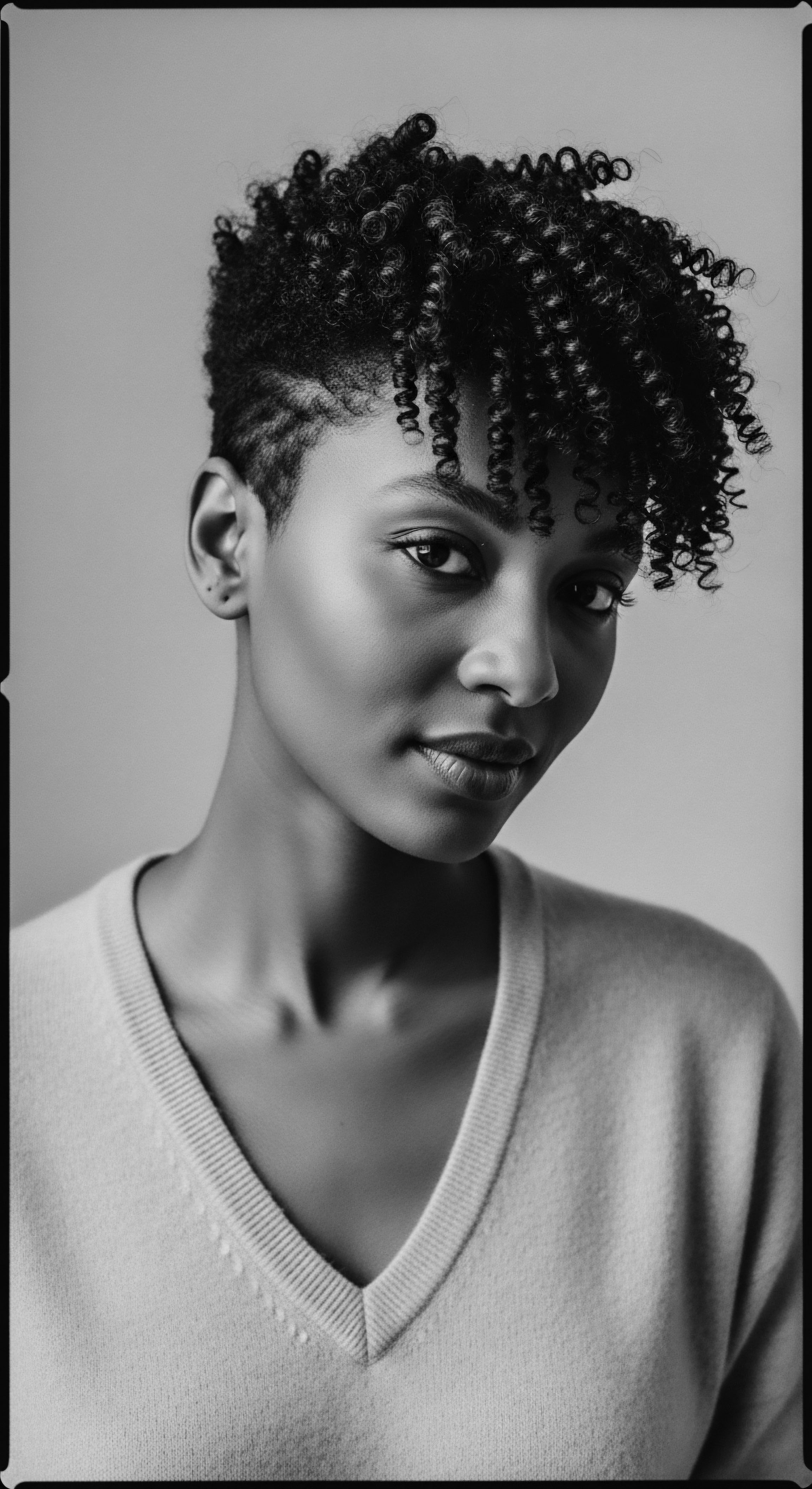
References
- Byrd, A. D. & Tharps, L. (2001). Hair Story ❉ Untangling the Roots of Black Hair in America. St. Martin’s Press.
- Chapman, K. (2013). Black women’s hair ❉ A reflection of identity, culture, and power. Journal of Black Studies, 44(2), 115-131.
- Fongnzossie, E. et al. (2018). Ethnobotanical Survey of Medicinal Plants Used for Cosmetics by Choa Arab and Kotoka Ethnic Tribes of Kousseri, Cameroon. Journal of Medicinal Plants Research, 12(18), 241-249.
- Garrin, J. & Marcketti, S. B. (2018). The Afro as a Political Statement ❉ The Evolution of Black Hair and Identity. Fashion, Style & Popular Culture, 5(2), 231-248.
- Jacobs-Huey, L. (2006). Negotiating the ‘Natural’ ❉ Hair and Identity in African American Women’s Talk. Journal of Linguistic Anthropology, 16(2), 185-202.
- Mbilishaka, A. et al. (2020). Hair Discrimination ❉ A Social Injustice. Journal of Social Issues, 76(4), 590-607.
- Ndhlovu, P. T. et al. (2019). Ethnobotanical Survey of Medicinal Plants Used by Vhavenda Women in Limpopo, South Africa for Skin and Hair Care. Journal of Ethnopharmacology, 233, 237-248.
- Prabhu, M. et al. (2021). Ethnobotanical Study of Plants Used for Hair Care by Pachamalai Tribe of Tamil Nadu, India. Journal of Traditional and Complementary Medicine, 11(2), 154-162.
- Rosado, S. (2003). The Grammar of Hair ❉ The Socio-Cultural Significance of Hair among Women of African Descent. Routledge.
- Sobiecki, J. F. (2012). The Intersection of Culture and Science in South African Traditional Medicine. Journal of Ethnopharmacology, 141(1), 1-8.
